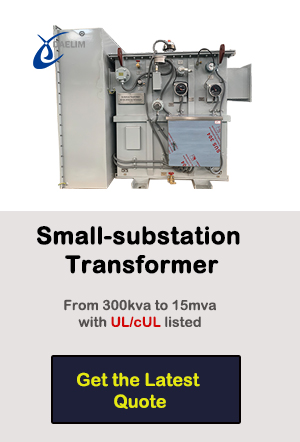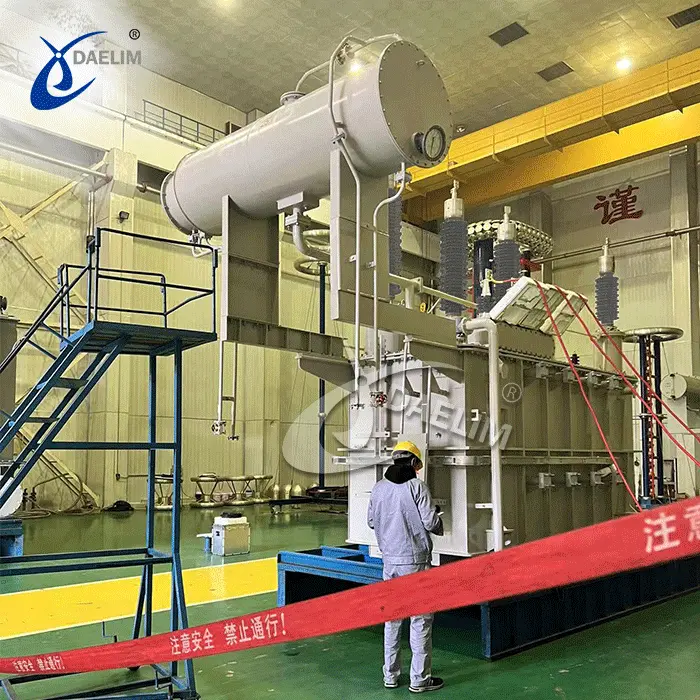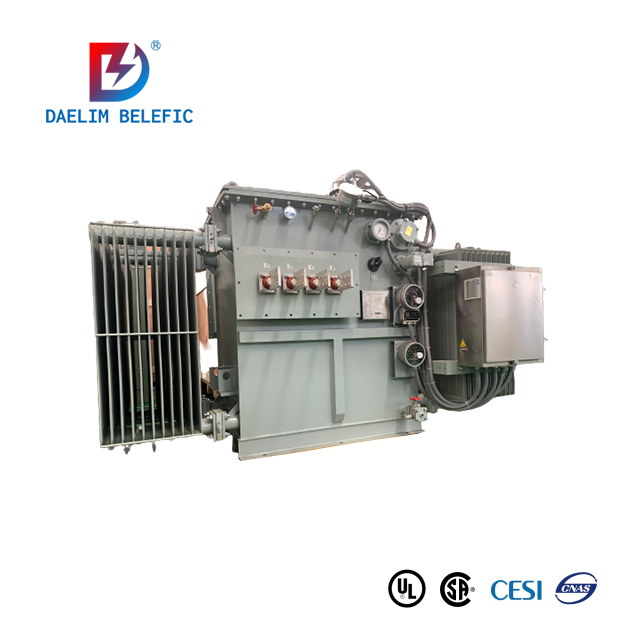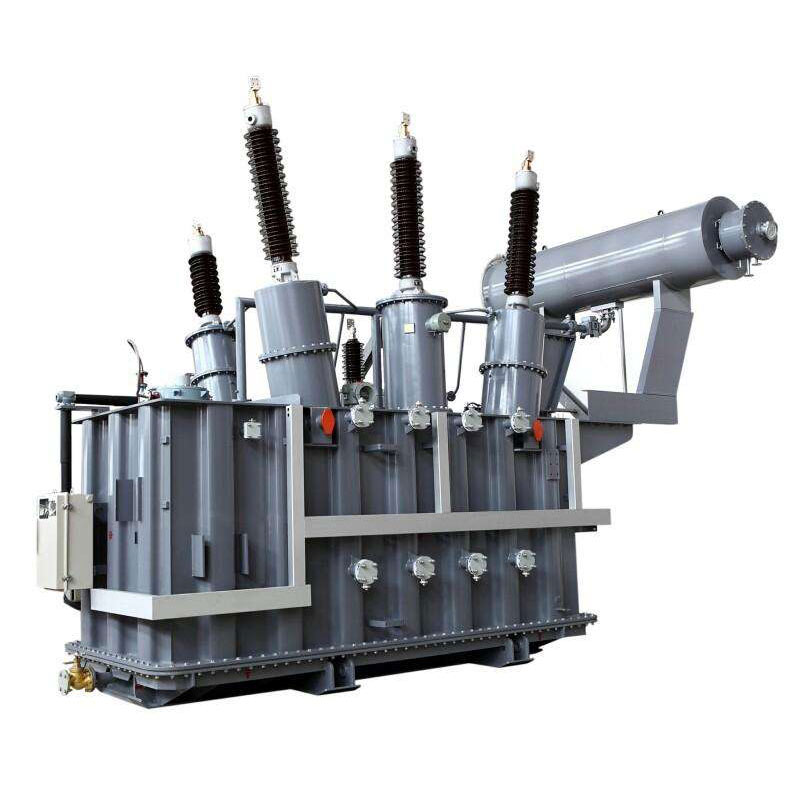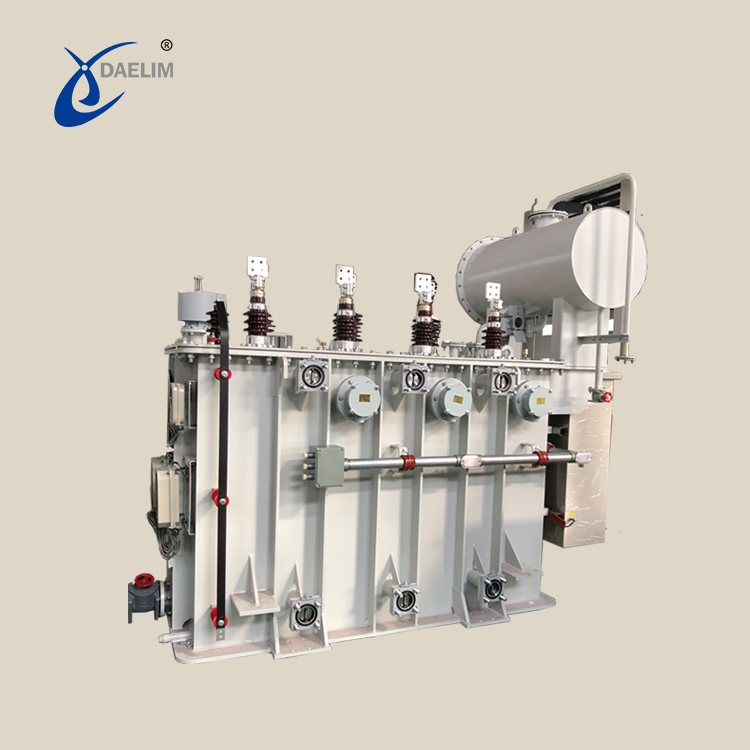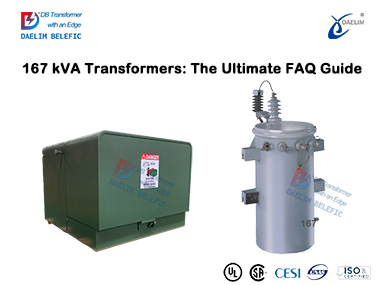The Ultimate FAQs Guide To GSU Transformer
Are you looking to purchase a generator step-up transformer (GSU) for your business? Are you responsible for their operation? If so, then you should know that there's quite a lot to know about them. But while GSUs are critical pieces of equipment, they're also quite complex. So to help you understand them better, we've compiled a list of answers to some of the most frequently asked questions about GSUs.
Daelim is a top transformer supplier in China. With more than 20 years of transformer export experience. Mainly produce HV power transformer, 3 phase pad mounted transformer, single phase pad mounted transformer, Skid Substation Transformer, Single Phase Pole Mountainsformer, and Dry Type Transformer.
Strict procurement links and quality control systems ensure the safety and reliability of each transformer. Daelim's GSU Transformer has a short delivery period and competitive price.
What is a GSU Transformer?

A generator step-up (GSU) transformer is a transformer that increases the power voltage generated by a generator. GSUs are typically used in electrical power plants, where they increase the voltage of power generated by the plant's generator so that it can be sent out over the transmission network.
GSU transformers play an important role in linking the power station and the transmission network. It's usually operated every day at full load. Its configuration and overall build are meant to withstand extreme thermal loading without succumbing to early wear and tear.
With a GSU transformer, the generator's output voltage is stepped-up to a much higher voltage. The generator's output current is correspondingly reduced. It makes use of electromagnetic induction to boost the voltage of the generator.
Learn more about step-up transformers: What Are The Main Information and Specs of A Step-Up Transformer?
How Does a GSU Transformer Work?
A generator step-up transformer works by converting the generator's low voltage and high current output into a higher voltage and lower current. This is done by windings of wire around a common iron core.
The generator's low voltage is applied to one set of windings (the primary winding), which induces a magnetic field in the transformer's core. The magnetic field interacts with the turns in the secondary winding to produce a higher voltage according to Faraday's law of induction.
As a result, the current in the secondary winding is lower than the current in the primary winding. The reason for this is that fewer turns are wrapped around the secondary coil relative to the number of turns wrapped around the primary coil.
The magnetic field in the iron core is produced when an electric current passes through the primary coil or transformer input. You can then send out the high-voltage output coming from the secondary winding over to the transmission network.
Try for free: The Ultimate FAQs Guide To Oil Type Transformer
Are Transformers and Generators the Same?

No, they're not the same. A transformer functions differently from a generator. However, they do work together to provide power.
A generator creates electricity by spinning wire coils within a magnetic field, producing an electric current. A transformer shifts energy by increasing or decreasing the voltage of an alternating current (AC).
It does this by using coils of wire wrapped around an iron core. The primary coil is connected to the generator, and the secondary coil is connected to the load.
By looking at their names, you can easily differentiate a generator from a transformer. This is because a generator creates or "generates" electricity while a transformer converts or "transforms" energy.
Both also use coils of wire but in different ways. For example, a generator uses its coils to create an electric current, while a transformer uses its coils to step up or down the voltage of an alternating current (AC).
Try for free: Power Transformer Manufacturers Around the World
What is the difference between a GSU transformer and a grid transformer?
The large impedance of GSU transformers
Due to the large capacity of the generator, the short-circuit current provided is also large. In order to limit the output of the short-circuit current, the impedance of the GSU transformer is required.
Although the power grid capacity is different, the short-circuit current of the power grid at the first level of the power supply bureau will not be very large. In order to meet the requirements of the stability of the power supply voltage, the transformer impedance here is smaller than that of the generator transformer. And a lower-voltage transformer.
The transformer of the generator is a boost transformer
The GSU transformer directly connects to the generator. The main role is to increase the voltage sent out from the generator and then transport the power transfer. Therefore, it must be a boost transformer.
The main function of the transformer used for the power supply bureau's power grid is to allocate electrical energy and transport them to residential areas, shopping malls, factories, and other places, so it must be a lower-voltage transformer.
Read more: Basic guide to boost transformers
The low-voltage side metal structure of the GSU transformer uses special shielding measures or low-magnetic steel materials.
Due to the high current of the low-voltage side of the GSU transformer, it is necessary to focus on issues such as iron component loss caused by the low-voltage lead through the regional leakage distribution, especially for the design of the low-voltage side increase. Avoiding local heat in steel materials requires providing reporting reports of leakage simulation.
What is the Difference Between GSU and SVC Transformer?
A generator step-up (GSU) transformer increases the generator's output voltage to a much higher voltage. A generator step-down (GSD) transformer does the opposite by reducing the generator's output voltage.
A static var compensator (SVC) improves the power factor and regulates the voltage. It does this by generating or absorbing reactive power.
So, the main difference between a GSU transformer and an SVC is that a GSU transformer steps up generator voltage while an SVC regulates generator voltage.
What are the Components of a GSU Transformer?

The main components of a generator step-up transformer are the primary winding, the secondary winding, and the iron core.
The primary winding is connected to the generator's low-voltage output. The secondary winding is connected to the transmission network. The iron core helps to create a strong magnetic field, which is necessary for transformer operation.
Get it now: The Ultimate FAQs Guide 5000kVA Transformer
What are the Advantages of a GSU Transformer?
There are several advantages of generator step-up transformers:
- They help to increase the generator's output voltage, which results in a corresponding decrease in the generator's output current. As a result, it mitigates power losses in both the generator and transmission lines.
- They improve power factor and regulate voltage.
- They're able to operate at full load for long periods without overheating.
- They have a small footprint and are easy to maintain.
What are the Disadvantages of a GSU Transformer?
There are also some disadvantages of generator step-up transformers:
- They're more expensive than distribution transformers.
- They require more maintenance than general transformers.
- They're more likely to fail than grid transformers.
Generator Step-Up Transformer Connection

There are two main generator step-up transformer connection types: the delta-wye and the zigzag.
- The delta-wye connection is the most common type of generator step-up transformer connection. It's used when the generator voltage is low and the transmission voltage is high.
- The zigzag connection is used when the generator voltage is high and the transmission voltage is low. It's less common than the delta-wye connection because it's more expensive and less efficient.
- Both connections have advantages and disadvantages, so choosing the right one for your particular application is important. For example, the delta-wye connection is more expensive but it's more efficient.
On the other hand, the zigzag connection is less expensive, but it's less efficient.
You may enjoy: What you need to know about Large Power Transformers?
How To Size a Generator Step-Up Transformer?
There are three main factors to consider when sizing a generator step-up transformer: the generator voltage, the transmission voltage, and the power rating.
The generator voltage is the first factor to consider because it determines the secondary winding voltage. The second factor to consider is transmission voltage because it determines the primary winding voltage.
The power rating is the third factor to consider because it determines the transformer's capacity. A transformer's capacity is measured in volt-amperes (VA). You can find the transformer's VA rating by multiplying the generator voltage by the generator current.
The formula for sizing a generator step-up transformer is as follows:
VA rating = generator voltage (Volts) x generator current (Watts)
For example, if you have a generator that produces 1,000 Volts and 10 Amps of current, the transformer's VA rating would be 10,000 VA. On the other hand, if you have a generator that produces 500 Volts and 20 Amps of current, the transformer's VA rating would be 10,000 VA as well.
What are the Types of GSU Transformers?
There are two main types of generator step-up transformers: air-cooled and liquid-cooled.
- Air-cooled transformers are cooled by circulating air around the transformer winding. Although air-cooled transformers are cheaper than liquid-cooled transformers, they're not as efficient as the latter.
- Liquid-cooled transformers are cooled by circulating a liquid (usual oil) around the transformer winding. Liquid-cooled transformers are more expensive than air-cooled transformers but are also more efficient.
What are the Standard Ratings for GSU Transformers?
Generator step-up (GSU) transformers are designed with precision and manufactured using high-quality standards. This level of quality control results in reliable and consistent transformer performance and a long-lasting life span.
GSU transformers are suitable for nuclear, thermal, and hydraulic applications. It covers power ratings that range from 5 MVA up to 1,000 MVA
What is the Difference Between a GSU Transformer and a Step-Up Transformer?
A generator step-up transformer (GSU) is a type of step-up transformer. GSU transformers are used to increase the generator voltage to the transmission voltage.
The application scope of the step-up transformer is wider. It can be used in generator power generation and can be used in power stations, residential areas, power consumption, etc.
What is the Function of a GSU Transformer?

The function of a generator step-up transformer (GSU) is to step up the generator voltage to the transmission voltage.
The generator voltage is usually low, so the GSU transformer increases it to the transmission voltage, which is usually high.
The GSU transformer is an important component in the power system because it connects the generator to the transmission network. At the same time, the GSU transformer also steps up the generator voltage to the transmission voltage. Hence the name, "generator step-up transformer."
Try for free: Solar Transformer - Your ultimate guide
What's the Cause of GSU Transformer Failure?
Step-up generator transformers are usually efficient and reliable. However, transformer failure can occur due for several reasons.
The most common causes of GSU transformer failure are due to the adverse conditions the transformer is subjected to, such as overheating, thermal cycling, high humidity, and so on.
Other causes of GSU transformer failure include fires, overloading, and water damage. These causes are usually due to human error or equipment failure.
Following the proper installation, operation, and maintenance procedures are important to avoid GSU transformer failure. You should also make sure that you have a system checklist that you follow regularly. This will help you identify any potential problems before they cause transformer failure.
Get it now: 3 Phase Pad Mounted Transformer
What is A GSU Substation?
A generator Step-Up Substation (GSU) is a transformer device used in the power plant. The primary goal of a GSU substation is to raise the generator voltage so that it meets transmission voltage standards.
Because the voltage emitted by the generator is usually very low, it needs to be increased to the high transmission voltage level. The process of doing this is known as voltage transformation.
To achieve this, generator step-up substations utilize several pieces of equipment, such as transformers, switchgear, circuit breakers, and so on.
GSU is an important part of the power generation system because they help ensure that the voltage of the generator is high enough to meet the transmission voltage standard. Without the GSU substation, the generator voltage will be too low, it will not be able to convey power energy for a long distance, and there will be the risk of power system problems
What's the Difference Between a GSU Transformer and a GSU Substation?
The main difference between a generator step-up transformer (GSU) and a generator step-up substation (GSU) is that a GSU transformer is only responsible for transforming the generator voltage to the transmission voltage.
On the other hand, a GSU substation is responsible for transforming the generator voltage to the transmission voltage and performing other tasks, such as providing switchgear, circuit breakers, and so on.
In short, a GSU substation is a more complex and comprehensive facility than a GSU transformer. While both facilities are important in the power system, GSU substations play a more critical role.
Reading on: Losses in Transformer: The Ultimate FAQs Guide
GSU Transformer Specifications
You should be aware of a few key generator step-up transformer specifications. These include the following:
- Voltage rating: This is the maximum voltage that the transformer can safely handle.
- Capacity: The maximum power the transformer can handle (measured in watts or VA).
- Efficiency: This measures how well the transformer converts electrical energy. The higher the efficiency, the less energy is lost in the form of heat.
- Impedance: The impedance of the coil in the transformer, including resistance, sensory resistance, and capacity.
- Temperature rating: This is the maximum temperature (measured in degrees Celsius or Fahrenheit) that the transformer can safely withstand.
- Insulation class: This measures the transformer's ability to withstand electrical and thermal stress. The higher the insulation class, the more resistant the transformer is to stress.
Here's a sample generator step-up transformer specification:
- Voltage rating: 115 kV
- Capacity: 500 MVA
- Efficiency: 99.5%
- Temperature rating: 150 degrees Celsius
- Insulation class: H
Read my article on The Impact of Impedance on Transformer Design
This generator step-up transformer has a voltage rating of 115 kilovolts (kV), 500 megavolt-amperes (MVA) capacity, and an efficiency of 99.5%. It also has a temperature rating of 150 degrees Celsius and an insulation class of H.
This transformer is designed for power systems with voltages up to 115 kV. It has a capacity of 500 MVA, which means that it can handle a maximum of 400 megawatts (MW) of power. The transformer is also highly efficient, with an efficiency of 99.5%.
The temperature rating of 150 degrees Celsius means that the transformer can safely withstand temperatures up to 150 degrees Celsius. This is important because transformers can generate heat when operating at full capacity. In addition, the insulation class of H means that the transformer is resistant to electrical and thermal stress.
If you have any questions about the transformer, please contact Daelim Transformer.
Related Products
Related Article
Electrical Power Transformer Basic Guide
The electrical power transformer is a very basic and important component, which is commonly used in power generation, transmission, substation, distribution, and other systems.
The Ultimate FAQ Guide To 167 kVA Transformers
There are many types of 167kva transformers, such as single-phase pole transformers, single-phase pad-mounted transformers, dry transformers, and so on. This article will talk about the 167kva transformer in detail.
Power Transformer-The Ultimate FAQs Guide
Power transformers are one of the most important equipment in the electrical power system. If you have any questions regarding power transformers, you'll find all of the answers you're looking for here.
Basic Guide for Grounding Transformer
In the three-phase power system, grounding transformer plays the role and function of auxiliary transformer. The function of a grounding transformer is to provide grounding mode for ungrounded delta connect or wye connect. Therefore, a ground transformer is also a very important part of the power grid grounding system.
Do you want to know more about 34.5 kv transformers?
The 34.5kV value here is a transformer with a high-voltage input voltage of 34.5KV, including some common single-phase transformers, three-phase oil-immersed transformers, and dry-type transformers.
Basic introduction of electric furnace transformer
Furnace transformer is one type of oil immersed power transformers, they are used for furances' power supply. So what is a furnace transformer? Compared with other transformers, is there any particularity in electric furnace transformers? Check out today’s article and find out the answers.


